Foot and Ankle
Hallux Valgus ( Bunion ) Surgery
Surgery is indicated when conservative management fails like wearing comfortable broad well fitted shoes, splints or orthotics, toe inserts, padding etc. The goal of surgery is to relieve pain and correct as much deformity as possible. For mild bunion, we remove only the enlarged portion of bone and realign the soft tissues surrounding the joint. For moderate to severe cases, we cut the enlarged bone with realignment of the bone around the joint. The outward deviation of the great toe is corrected so that the patient is able to wear shoes comfortably.
Lisfranc injuries fixation
Lisfranc (midfoot) injuries result if bones in the midfoot are broken or ligaments that support the midfoot are torn. Surgery is recommended for injuries with displaced fractures (broken bones) or with abnormal positioning (instability) of the joints. The goal of surgical treatment is to realign the joints, return the fractured bone fragments to a normal position, and restore stability to the midfoot. We either fix the fractured bones or fuse the mid foot joints depending on the type of injury to relive pain and restore the foot function. In ORIF technique (open reduction and internal fixation), we fix the bones in place with screws or plates. In midfoot fusion or arthrodesis, we remove the cartilage from the mid foot joints and fuse the joints with plates or screws.
Jones fracture fixation
Jones fractures are caused when you put sudden force on the outside of your foot with your foot twisted away from your body resulting in 5th metatarsal base fracture. We strive for maximal stability when fixing extraarticular fractures of the proximal 5th metatarsal (Jones fracture). We fix most of these fractures with percutaneous screw fixation. In a single-plane fracture with good bone stock, one single interfragmentary lag screw is adequate. The screw may be inserted as a standard bicortical lag crew or an intramedullary lag screw. In cases of displaced fractures, we use open reduction technique. We use screw with washer in osteoporotic bone. The screw size is selected according to the size of the bone, 3.5mm screws are usually sufficient.
Adult flatfoot Surgeries
AAFD (Adult acquired flatfoot deformity) is a collapse of the arch of the foot. We address flatfoot surgery through a combination of procedures depending on the grade of severity of the deformity. The goals of the surgery are to improve the alignment of the foot and restore more normal pressure during standing and walking. This surgery can also reduce pain and improve walking ability. We do surgery in regional block with nerve block to reduce post-operative pain. We do the following procedures in combination depending upon the severity of deformity:-
- Achilles Lengthening
- Medializing Calcaneal Osteotomy
- Tendon Transfers
- Ligament Repairs
- Lateral Column Lengthening
- Cotton (Medial Cuneiform) Osteotomy
- Midfoot fusion
- Subtalar Fusion
- Double or Triple Arthrodesis
Patients may go home the day of surgery or they may require an overnight hospital stay. The leg will be placed in a splint or cast and should be kept elevated for the first two weeks. At that point, sutures are removed. A new cast or a removable boot is then placed.
Tarsal Coalition Excision
A tarsal coalition is an abnormal connection of two or more bones in the foot. The bones affected — called tarsal bones — are located toward hind foot (back of the foot and in the heel), and the connection of the bones can result in a severe, rigid flatfoot. The two most common sites of tarsal coalition are between the calcaneus and navicular bones, or between the talus and calcaneus bones. In tarsal coalition excision surgery, we remove the coalition and replace the joint with muscle or fatty tissue from another area of the body. Goal of the surgery is to preserve normal foot motion and successfully relieving symptoms in patients who do not have signs of arthritis. In case of arthritis of the involved joints, we do fusion or arthrodesis to limit movement of painful joints with the help of large screws, pins, or screws-and-plate devices. Depending upon the type and location of your surgery, a temporary cast is applied for a period of time to protect the surgical site and prevent you from putting weight on the foot. Casts are typically replaced with walking boots with physical therapy exercises to begin restoring range of motion and strength.
Calcaneus,Talus fracture fixation
Most commonly, the talus breaks in its mid-portion, called the "neck." The neck is between the "body" of the talus, under the tibia, and the "head" of the talus, located further down the foot. We surgery in cases of displaced or open fractures of the talus. We do open reduction and internal fixation in which the bone fragments are first repositioned (reduced) into their normal alignment. They are then held together with special screws or metal plates and screws. In open fractures, there is high risk of infection therefore we thoroughly debride the wound, reduce and fix fracture with screws and augment with external fixator application.
A fracture of the calcaneus, or heel bone, can be a painful and disabling injury. This type of fracture commonly occurs during a high-energy event — such as a car crash or a fall from a ladder — when the heel is crushed under the weight of the body. Surgery is indicated in case of displaced or open calcaneus fractures. We do percutaneous screw fixation through small incisions if the bone pieces are large. Small screws are then inserted to hold the fracture together. If fracture fragments cannot be reduced percutaneously, then we do open reduction and internal fixation technique. During this operation, an open incision is made to reposition (reduce) the bones into their normal alignment. They are then fixed with metal plates and screws.
Triple Arthrodesis-Great toe, Subtalar, ankle
Arthrodesis of foot and ankle refers to the surgical fusion of two or more bones in foot and ankle into one bone. The primary goals of an arthrodesis are to relieve pain from arthritic, deformed, or unstable joints. It is indicated for severe pain or disability caused by advanced adult flat foot deformity (rigid flat foot with arthritic changes in hind foot), degenerative joint disease, rheumatoid arthritis, post traumatic arthritis, congenital deformity, charcot neuropathy.
In this procedure, we make incisions around the joint and remove all cartilage in the joint so that the bones are touching directly. The joint will then be held in place with specialised plates and/or screws. This allows the bones to heal and fuse together to create an immovable joint. Subtalar arthrodesis refers to the fusion of the joint between talus and calcaneus bone. A triple arthrodesis is a procedure consisting of the surgical fusion of the talocalcaneal (TC), talonavicular (TN), and calcaneocuboid (CC) joints in the foot.
Great toe arthrodesis refers to the fusion of the first metatarsophalangeal joint, done for bunion with arthritic joint. In Ankle arthrodesis, the joint between tibia and talus bone is fused. The fused Joint becomes immobile after successful arthrodesis procedure, which is well tolerated for foot and ankle joints unlike the big joints like hip and knee.

Dr. Manuj Wadhwa
Chairman & Executive Director- Elite Institutes of Orthopedics & Joint Replacement
- Ojas Hospitals, Panchkula
- Ivy Hospitals, Punjab
Awards Wining Doctor
- 2 Times World Book of Records
- 7 Times Limca Book of Records
Let’s Get In Touch

Sector 22, Panchkula
09:00 am - 04:00 pm
(By Prior Appointments)

Sector 71, Mohali
09:00 am - 04:00 pm
(By Prior Appointments)
Email us
Give us a Call
Book An Appointment








